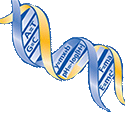Group Offers Plan for Teacher Shortfall
A report that was slated for release this week foresees a vibrant, hands-on role for businesses in combating the much-publicized shortfall of math and science teachers in K-12 schools.
Members of the Business-Higher Education Forum, an organization made up of Fortune 500 chiefs and higher education leaders, say the United States will need 280,000 new mathematics and science teachers by 2015. But there simply are not enough skilled teachers in those areas entering the profession or committing to long-term careers, the report underscores.
To help relieve the shortage, the Washington-based forum puts forth a detailed plan that calls on the federal and state governments, school districts, higher education institutions, and businesses to work in concert in teacher recruitment, retention, and continuing professional growth.
For instance, the report says, in the area of retention, the federal government could expand support for comprehensive, research-based teacher-induction programs; state governments could disseminate tools to evaluate the effectiveness of such programs; school districts could establish, evaluate, and report on the programs; universities could conduct research on their effectiveness; and businesses could sponsor and support the programs.
Forum members hope their strategy would double the number of college graduates with degrees in critical STEM—science, technology, engineering, and math—disciplines in eight years.
Many reports in recent years have sought to highlight the problems in STEM education, most notably “Rising Above the Gathering Storm,” which was prepared in 2005 by a panel of business leaders convened by the National Academies. The report warned that the U.S. economy would suffer if it failed to improve the scientific and technological skills of its workforce.
But Brian Fitzgerald, the executive director of the Business-Higher Education Forum, said very few of the other reports have called for a strong role for business in addressing the critical shortage of math and science teachers, or identified sound strategies to counter it. “This report is unique because it deals with recruitment, retention, and renewal, and creates a road map for each of the five stakeholders to get this work done,” he added.
New Ideas
Some recommendations in the report are familiar, such as scholarships for teacher education students in the STEM disciplines, differential pay for such teachers, and ongoing professional development.
But there are new ideas as well, among them the creation of an administrator’s position at each school—a vice principal of academic affairs to provide support for new teachers, help experienced teachers master classroom-instruction skills, and help all teachers develop and implement curricula.
While some may worry about adding another administrator to schools, the authors say the idea was modeled after the leadership of universities, where a president and a provost handle different affairs, complementing each other.
Gerald F. Wheeler, the executive director of the National Science Teachers Association, in Arlington, Va., said that is one of the many proposals in the report he is excited about working with schools to carry out. “A vice principal for academic affairs could be a coordinating glue who would bring teachers together,” he said.
The report also proposes early and aggressive teacher-recruitment efforts, such as targeting middle school students and presenting them with teaching as a viable career option.
With two major pieces of federal education legislation up for reauthorization, the No Child Left Behind Act and the Higher Education Act, forum members said a window of opportunity is open to influence significant change.
Investing in STEM programs, Mr. Fitzgerald said, is “a national imperative” to keep the United States intellectually vibrant and economically competitive.
